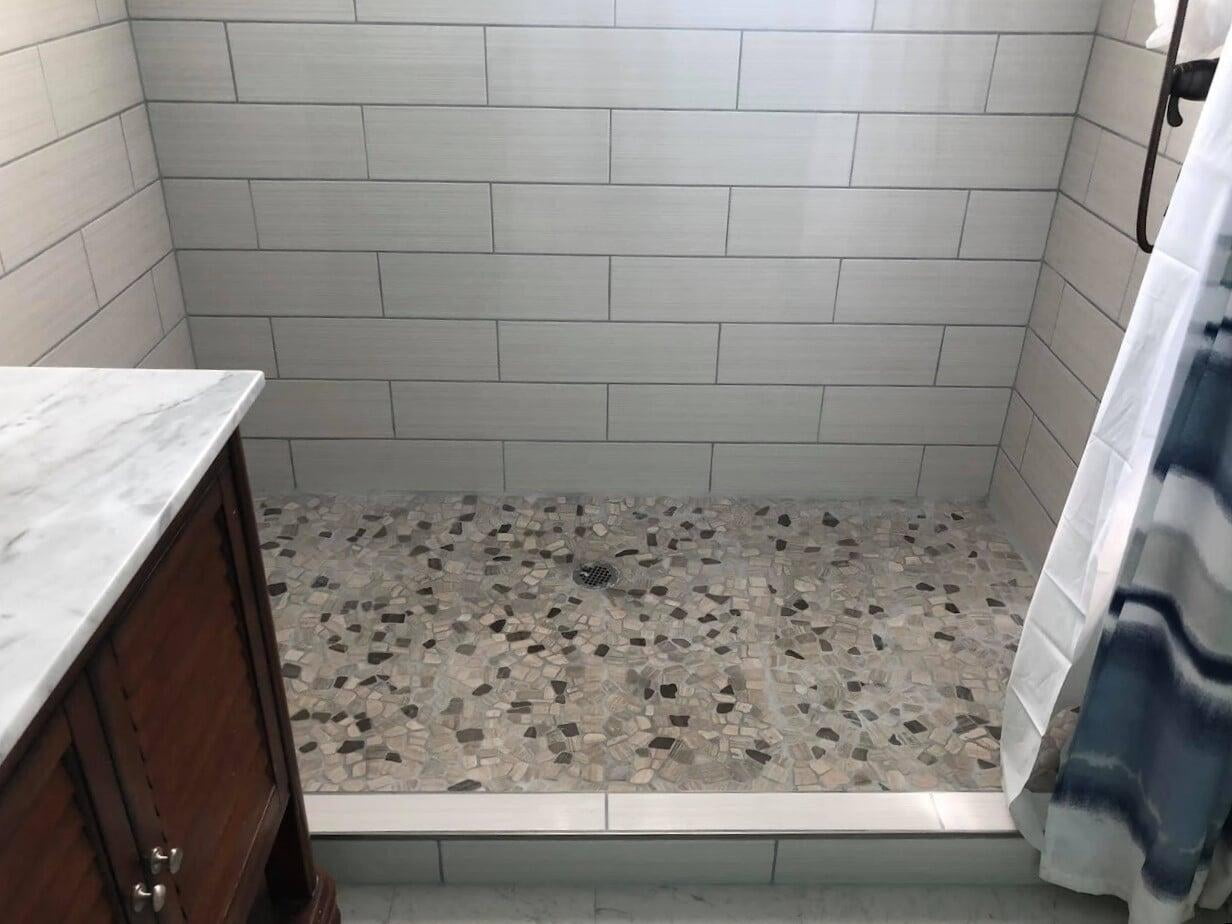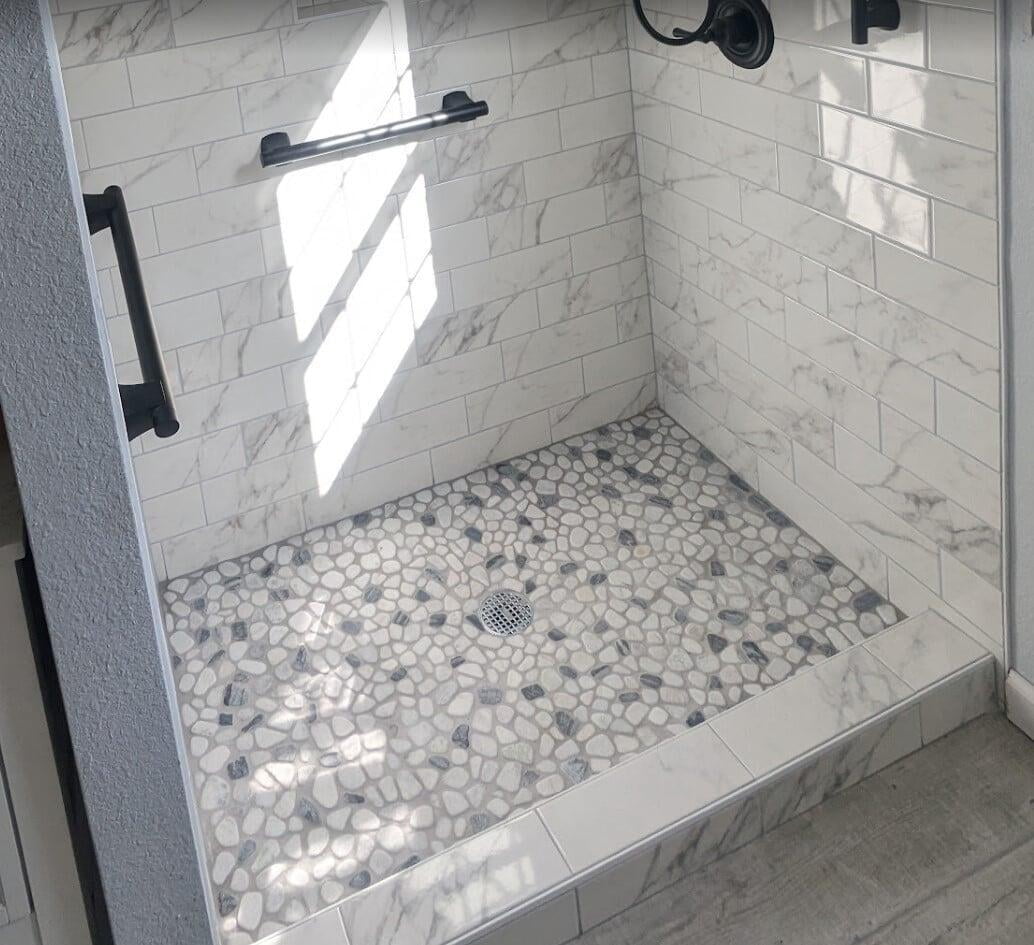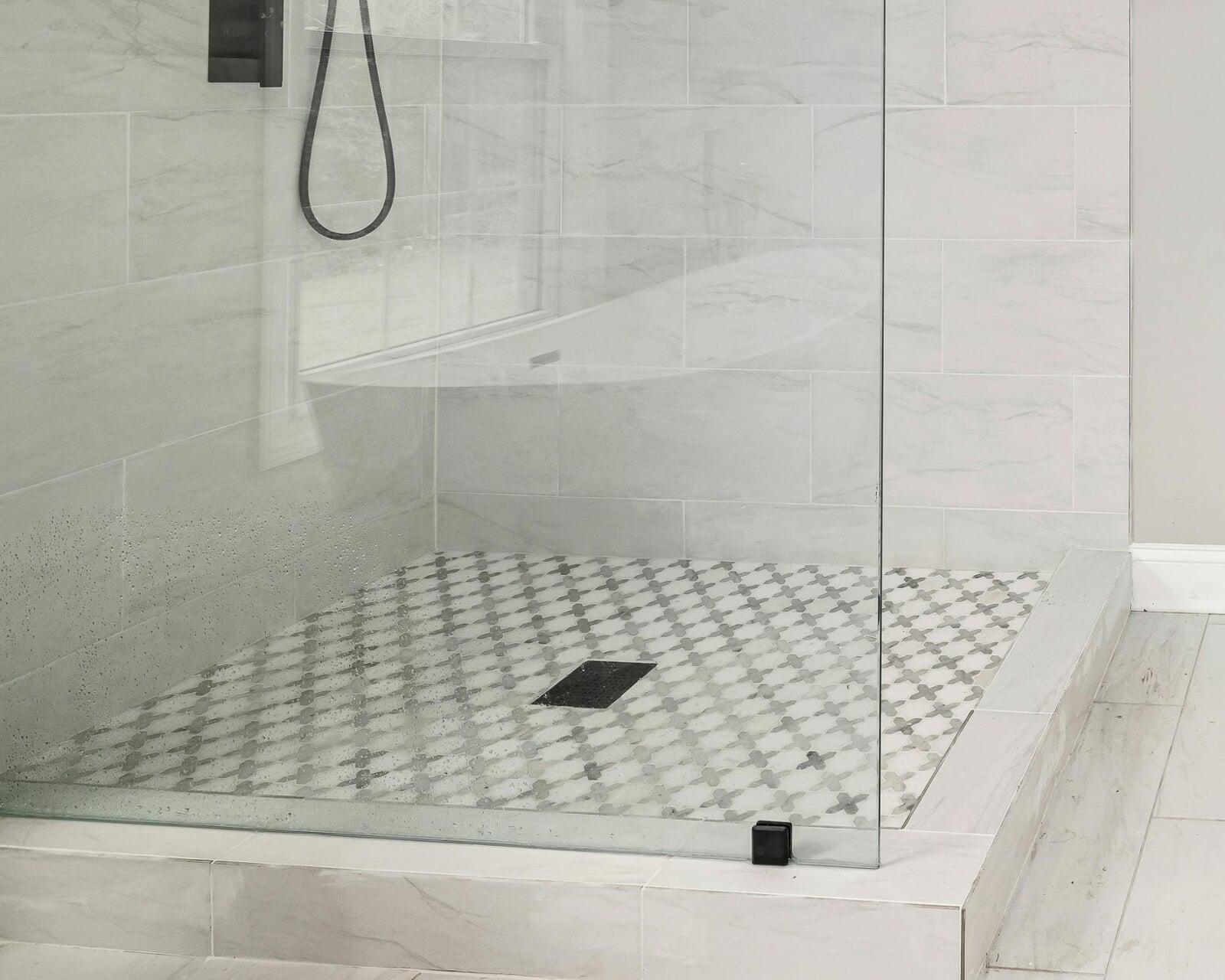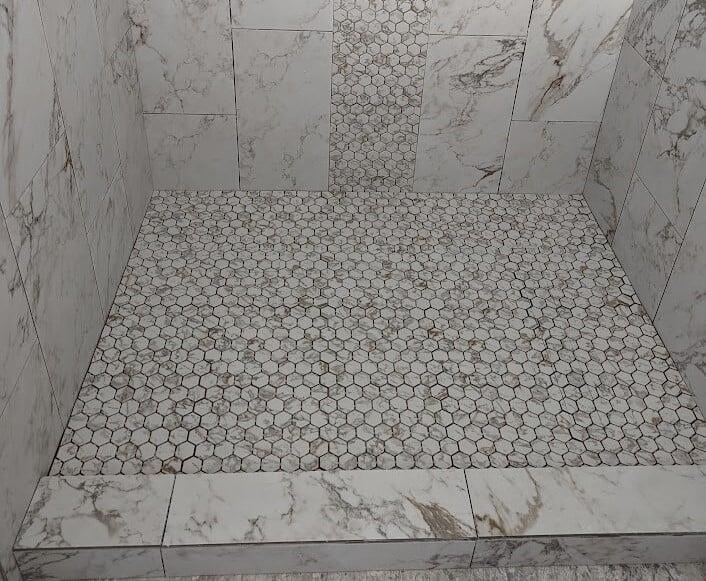When you’re planning a bathroom makeover, every detail counts—even the shower curb. The shower curb might seem like a small feature, but it can make a big difference in how your bathroom looks and functions.
When you’re planning a bathroom makeover, every detail counts—even the shower curb. The shower curb might seem like a small feature, but it can make a big difference in how your bathroom looks and functions.
What is a Shower Curb?
What is a Shower Curb?
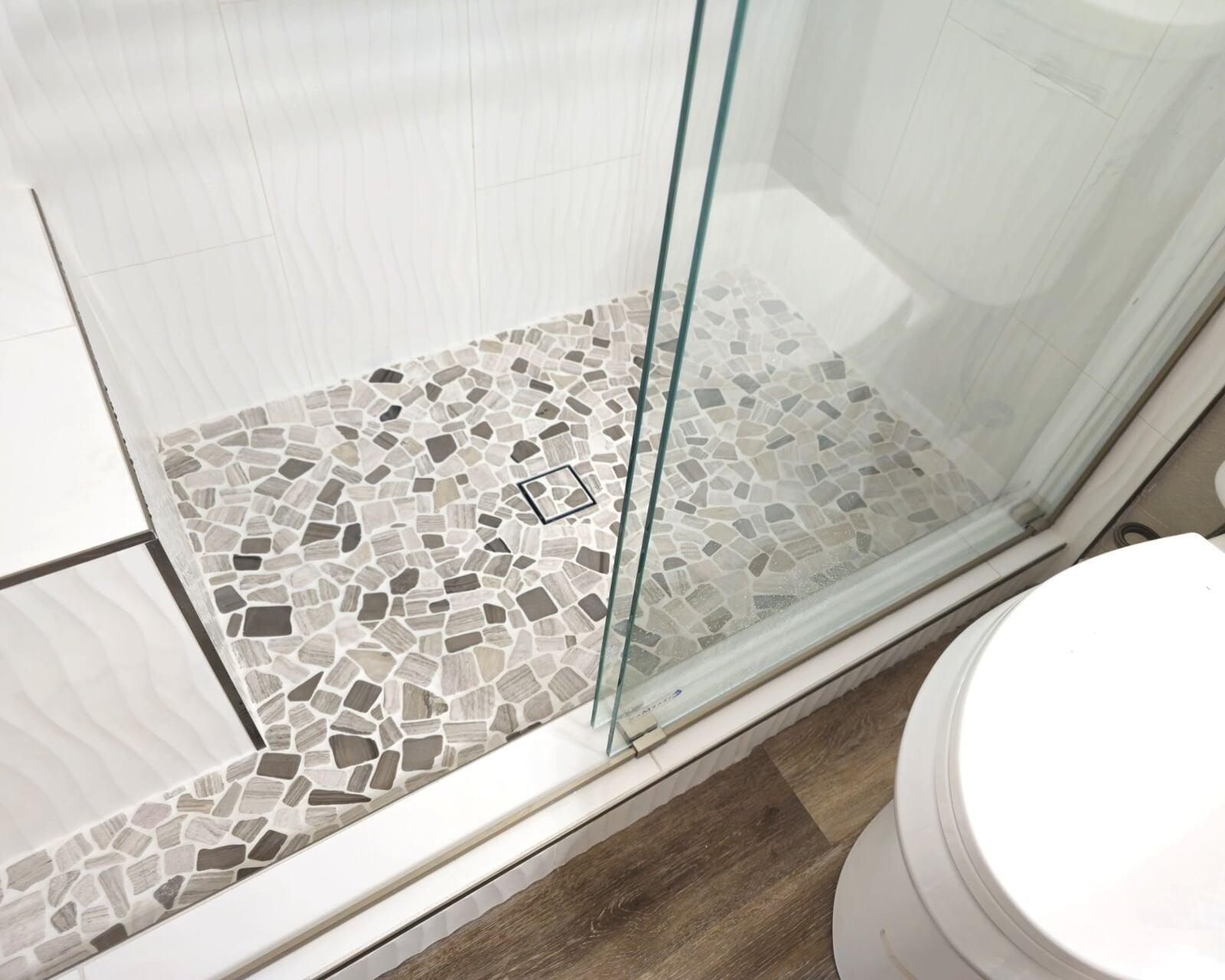
A shower curb is a small raised barrier, normally at the edge of a shower, that serves to keep water contained within the shower area. It's essentially a threshold between the shower and the rest of the bathroom, preventing water from spilling onto the bathroom floor.
Shower Curb Finishes Options
Shower Curb Finishes Options
If you're thinking of a tile shower, you'll also need to consider the shower curb, unless you have a standard acrylic pan where the curb is already finished. For a tile shower curb, there are various finishing options available.
01. Solid Surface Top
01. Solid Surface Top
The solid surface top is a popular choice for many homeowners due to its clean and modern look. This option involves using a single piece of material such as granite, marble, or quartz to cover the top of the shower curb. It offers a seamless, polished finish that's easy to clean and maintain. The choice of material allows for a wide variety of colors and patterns, making it easy to match with the rest of your bathroom design.
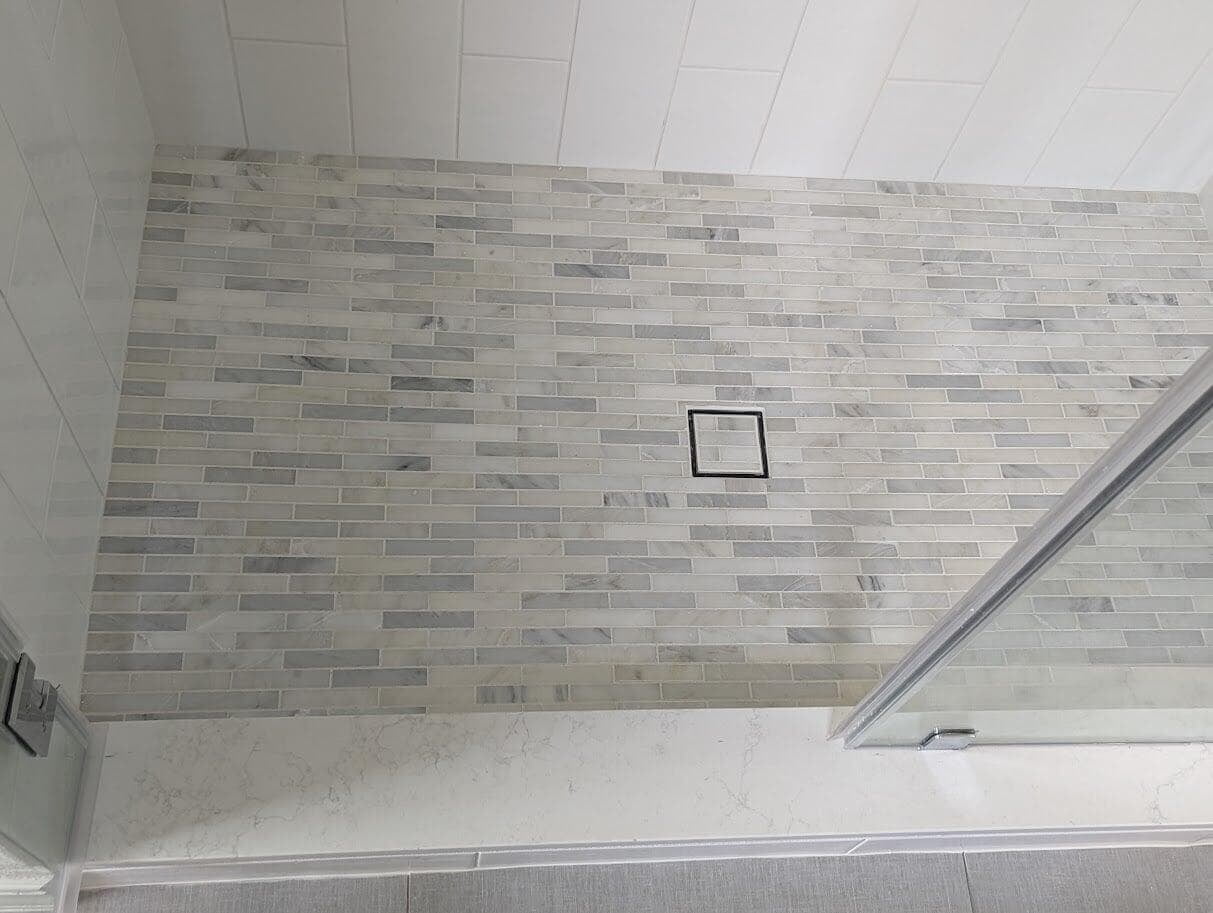
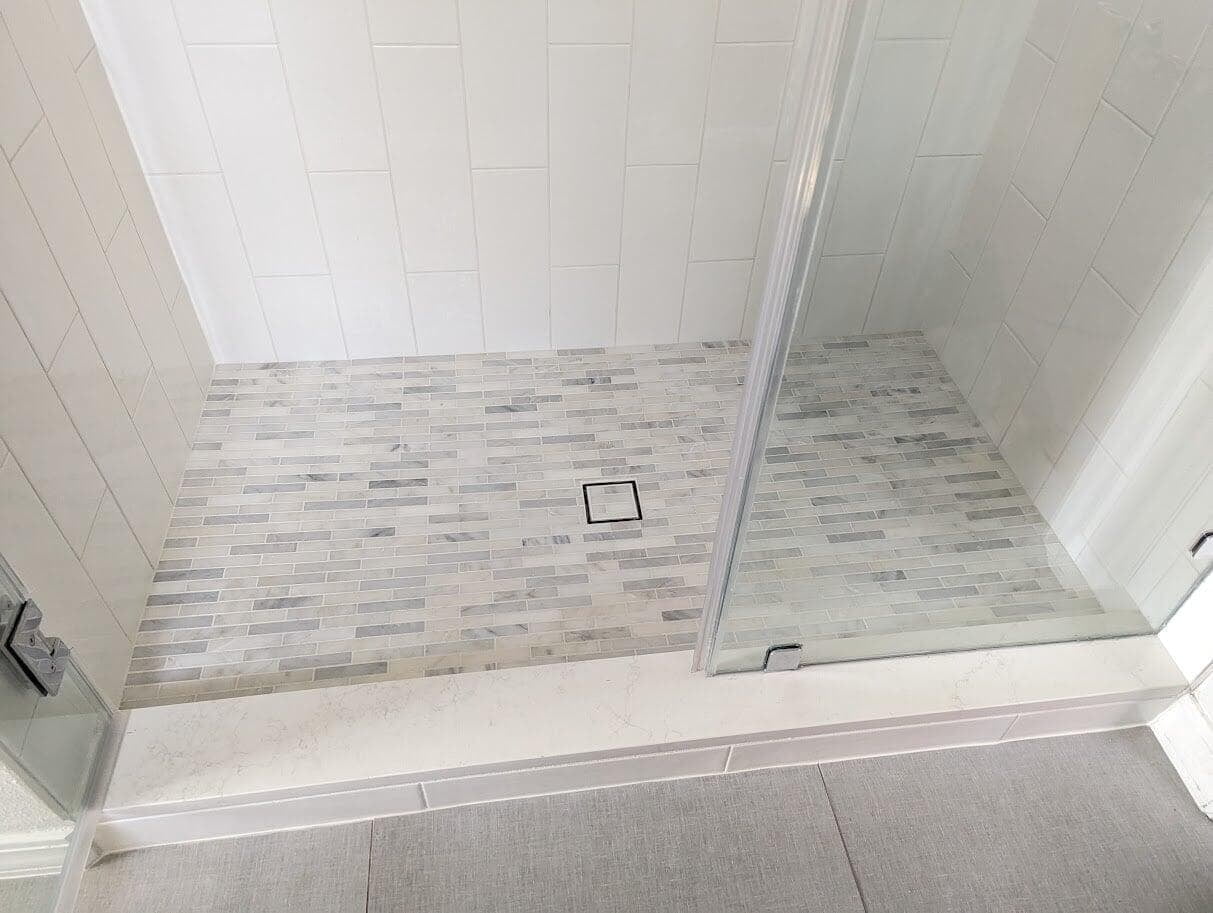
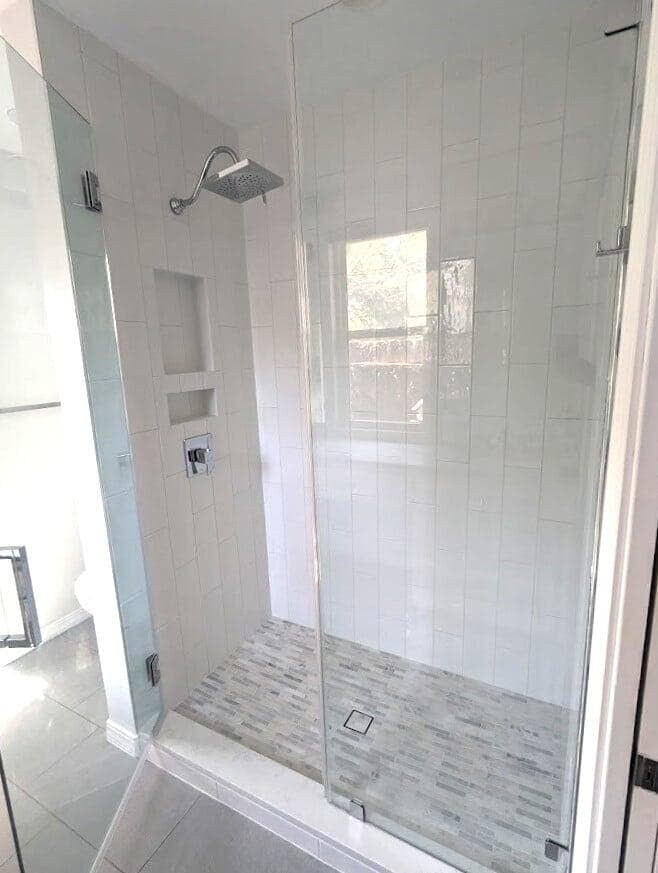
Advantages:
Disadvantages:
Best for:
02. Profile Edging (Tile Trim)
02. Profile Edging (Tile Trim)
Profile edging, also known as tile trim, is another versatile finish option for your shower curb. It refers to the use of specialized trim pieces designed to cap off the edge of your tiles, providing a neat and clean transition. Think of it as a frame that adds a finishing touch to your tile work. Not only does profile edging give your shower curb a refined, professional look, but it also protects the vulnerable tile edges from chipping or cracking over time.
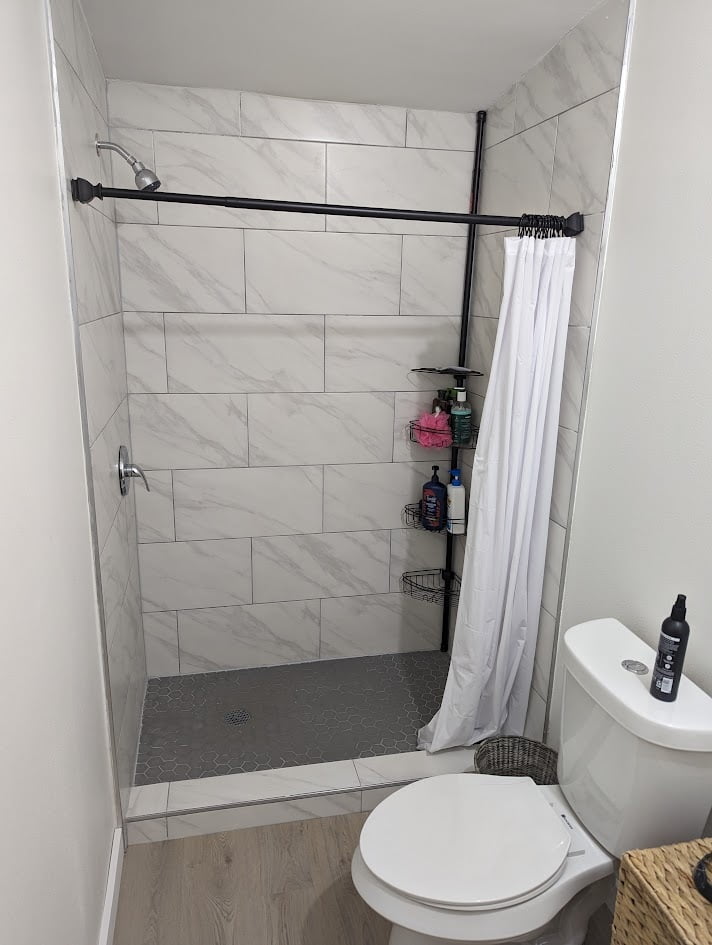
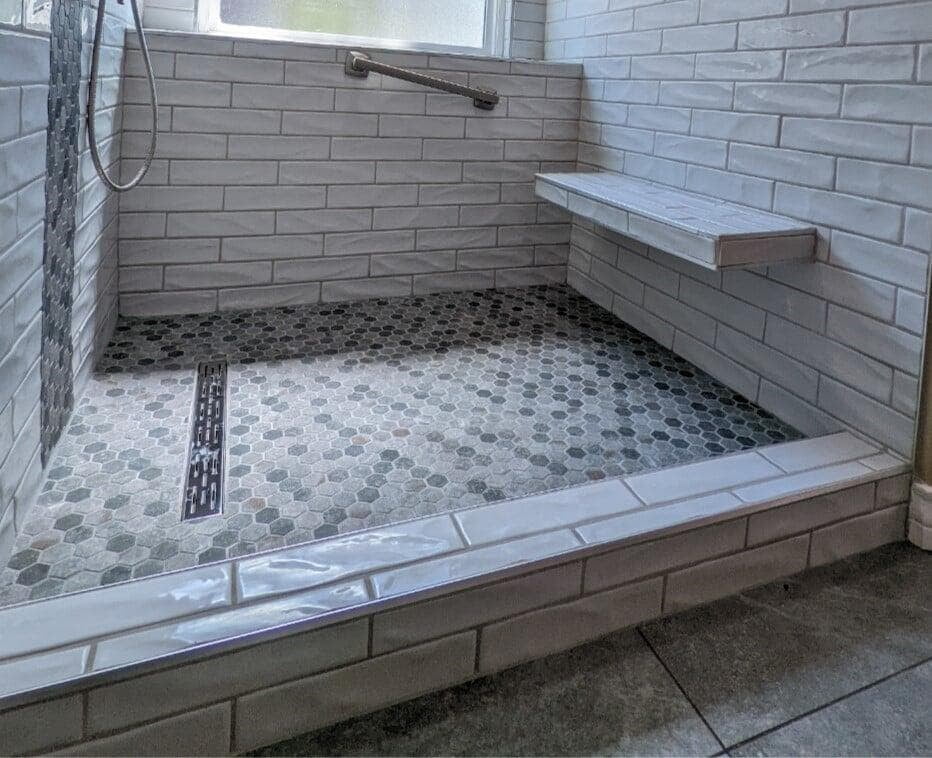
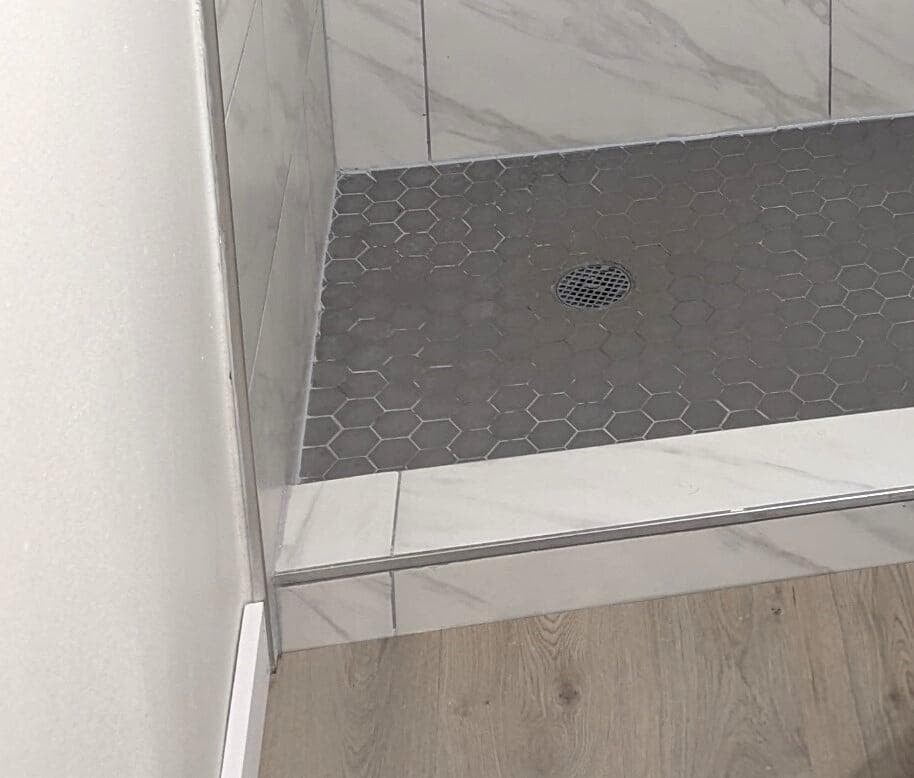
Advantages:
Disadvantages:
Best for:
03. Pencil Trim
03. Pencil Trim
Pencil trim is a subtle and elegant choice for finishing your shower curb. This narrow strip of tile or trim is often used to cap the edge of the curb tiles, providing a clean and polished appearance. Pencil trim can be chosen in a color that complements your shower tiles or contrasts them to create a striking visual effect. It's a timeless option that works well in both traditional and contemporary bathrooms.
Advantages:
Disadvantages:
Best for:
04. Mitered Tile Curb
04. Mitered Tile Curb
A mitered tile curb involves cutting the edge of the tile at a 45-degree angle so that it wraps around the curb, creating a continuous flow of tile. This technique can create a clean, seamless look, especially when using large format tiles. However, mitering tiles requires precision and skill, so it's best left to experienced professionals.
Advantages:
Disadvantages:
Best for:
05. Raw Tile Edge
05. Raw Tile Edge
If you prefer a simpler or more industrial style, you can opt to leave the tile edge as is, leaving the tile's cut edge visible on the shower curb. This is a straightforward choice that complements modern or rustic bathroom aesthetics. However, there are some drawbacks to consider. The primary concern is that over time, the exposed cut edges of the tile may become chipped or damaged, resulting in an uneven and potentially unsafe appearance.
Advantages:
Disadvantages:
Best for:
No matter what type of finish you settle on, a shower curb is always an important security factor when installing a shower. With proper materials and installation, it will provide a strong foundation that withstands water damage and promotes a safe environment for you and your family.
How Tall Should the Curb Be?
How Tall Should the Curb Be?
In the United States, building regulations typically require the shower curb to be 2 inches taller than the drain. However, it doesn't have to be exactly 2 inches high; it can vary a bit, especially if the floor of the shower slopes downward toward the drain. It's a good idea to check with your local inspector or look up the regulations in your state and local area to ensure you're following the correct rules.
Curb Height Options
When considering curb height, there are different options that cater to specific needs and preferences:
Standard Height Curb (4-6 inches)
Low-Profile Curb (2-3 inches)
Choosing the right shower curb finish may seem like a small detail, but it plays a big role in the overall look and function of your shower. From the smooth appearance of solid surface tops to the detailed touch of profile edging or pencil trim, each option offers its own benefits. It’s all about finding a balance that meets your design preference, safety needs, and budget.
The curb keeps water contained and ensures safety, so making an informed choice matters. Take your time, think about what suits your bathroom best, and choose a finish that works for you.
If you’re in Corpus Christi or South Texas and need guidance with your shower project, we’re here to help. Reach out to us today, and let’s find the right curb finish that brings your bathroom vision to life.

